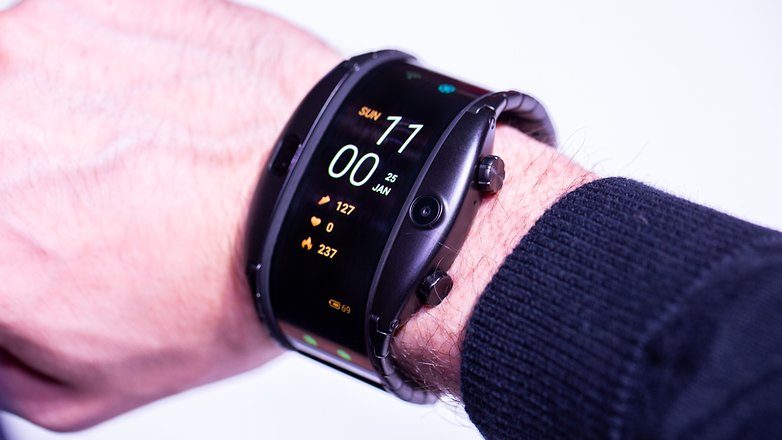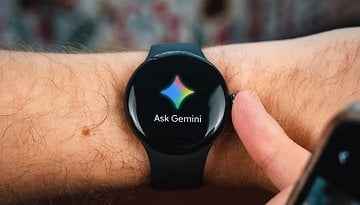Smartwatches: fashion over function?


Just a couple of years ago, you could have declared the wearables market dead and you wouldn't have been too far from the truth. However, smartwatches have had quite the revival recently, with sales in the US alone growing more than 50%. Yet, to me it seems that they owe their success more to fashionable design than they do to innovative features. Is the new motto of smartwatches 'form over function', and what does that mean for the industry?
If we are to look at the wearables market as a whole, there is so much variety that it's easy to get lost in the sea of options. Fitness trackers, smart bands, smart watches, 'dumb watches' with some smart functions and so on. Some are tailored to runners, some to swimmers and others to fashionistas. Yet, almost all of these smart accessories seem to offer the same functions that have become staples by now: some level of water resistance, heart rate monitor, step tracking, GPS and NFC (used to make contactless payments). Even specs are almost the same across the board. So how do brands stand out from the crowd? Design, of course.
While fitness bands market themselves on their practicality and affordability - they usually use cheap, but durable materials, smartwatches are increasingly becoming luxury products. Of course, watches have been used as a status symbol for centuries, so it should come as no surprise that fashion brands with little to no tech experience like Michael Kors, Emporio Armani and Louis Vuitton are now rushing to introduce 'connected watches' with intricate and stylish designs.

And like anything designer, these smartwatches have the prices to match. The latest Tambour Horizon by Louis Vuitton, for example, will set you back $2,550 for the cheapest Monogram Eclipse version, despite having a pretty average 300 mAh battery and no spectacular features. Sure, it has the latest Snapdragon Wear 3100 processor, along with 1GB of RAM and 8GB of storage, but that still doesn't justify the price if we remove the brand from the equation. You're paying thousands for the premium materials, the "exclusive" customizable watch faces, but mostly for the LV logo.
Of course, the Louis Vuitton is one of the more extreme examples, as its price exceeds that of most current flagship smartphones (foldable phones are the only exception). Michael Kors Access Runway, for example, has a much more modest price of $350. It is a premium-looking smartwatch, which offers the typical stuff - accessing your notifications quickly, Google Assistant, setting reminders, and contactless payments.

However, in her review, my colleague Jessica found its battery life to be disappointing (300 mAh battery), while its multiple fitness features didn't really go with its metal strap design. The watch even crashed a couple of times. So, what's the point of it being 'smart' really? If you want to have a status symbol or a fashion statement on your wrist, you could just as easily do so with a 'dumb' watch.
This is why I'm skeptical about the fashion industry's entry into the wearables market. Yes, it will inevitably bring more visual variety and creativity, but can it stifle innovation? If people are happy to spend hundreds if not thousands on a mediocre piece of tech, because of a brand logo, what's manufacturers' incentive to work on hardware and/or software improvements? Some could argue that the same applies to smartphones, but I don't think that's the case.

The smartwatch market is fundamentally different from the smartphone one in some respects. Yes, form factors matter when it comes to phones too, but there, design is much more homogeneous and takes a back seat to specs and features. Of course, we also have to ask ourselves if we expect too much from smartwatches considering their comparatively tiny size. Some already have Google Assistant integration and smart home control options, which make them seem quite advanced. So, what's next?
If Google enters the wearables market with a Pixel Watch, the expectations will be high. We know of Google's love for integrating AI functions into everything (Google Assistant will surely be present), but not even the Mountain View giant can perform miracles and introduce futuristic functions if the hardware is not ready for it.
Finally, we have already seen attempts to make smartwatches completely independent from phones in the form of the newly unveiled Nubia Alpha, which claims to be a hybrid. Nevertheless, the device has specs more reminiscent of a watch than a foldable phone. It also has a 5 MP camera, but is that something you really need on a wearable?

Ultimately, it seems that the current trend in smartwatches is fashion over function. However, considering the shortcomings of the available tech, it might be what the wearables market needs to hold it over before we see major hardware improvements. And, of course, there's nothing wrong with wanting to be fashionable. You are free to spend your money on whatever you want as a consumer. How the industry reacts to current trends is another matter. We can only hope to see more progress instead of overreliance on looks.
What do you think? Do you own a smartwatch? Is it more of an accessory or a practical device for you? Let us know in the comments.




















The smart watch is an extension tool of a persons ever rushing world.
I can gave my smart phone at my desk and when a call comes,i get notified via smart watch.
It has multiple applications including gps,steps taken ,notifications including texts and heart beat recordings.
And of course the time with multi faces that i can control and enjoy on one single watch.
I intend my smartwatches to be practical accessories to mobile devices, with maybe a touch of health coming up.
More in depth:
I'm using several mobile devices at a time, both on Android and on iOS. The smartphones among these tend to get (replaced by some featuring) larger screens and to get busier receiving e-mail and whatever. So I find myself happy to have those devices just near me, and rely on my watch to tell the time, to be notified of incoming messages, at home to control the streamed music I'm listening to. I may have reason to use the health features of some smartwatches, but not yet.
I bought my first smartwatches for navigating on my bike (in or just outside the Netherlands), but I soon replaced visual directions with audible ones. That stalled my intended primary use. I now see navigation return to my wrist in boating situations. Like at the helm of a tiny sailing boat, having all relevant information on one clever watchface. To me, highly informative watchfaces are tied to rectangular watches.
Unfortunately, I all but lost my use for Android devices due to unacceptibly short battery life (when depending on GPS on a bike). Disabling Facebook (and maybe other apps) proved encouraging enough to have me buy a new Android smartphone - and another one recently.
I love having one foot in both Android and iOS country, for 5the philosophies do differ, rather than compete. They do have wider philosophies, which I can't yet see with vendors creating their own incompatible spaces. Which is why I stick to Wear OS to match my Android devices. Selecting a helmsman's watchface would be Android stuff.
I currently have six smartwatches. Three Apple Watches paired with iPhones (two with SIM-card, one wifi only), two Polar M600 watches, recently purchased and paired with my two acting Android phones, and an older Sony SmartWatch 3 paired with an Android tablet. (Note that pairing an Apple Watch with an iPad is impossible, other combinations are.)
Pairing a watch with a tablet may seem silly. However, the tablet (Mi Pad 4 Plus) features LTE, GPS and good battery life. So the combination may appeal both on the couch and on the water (but less on the bike).
i havent found a use case for these devices.
Yup...just like with smartphones, to a degree. They now must be "slim, sexy, colorful & stylish"...along with the ever higher price!
All that fancy design & color, then covered by a protective case.